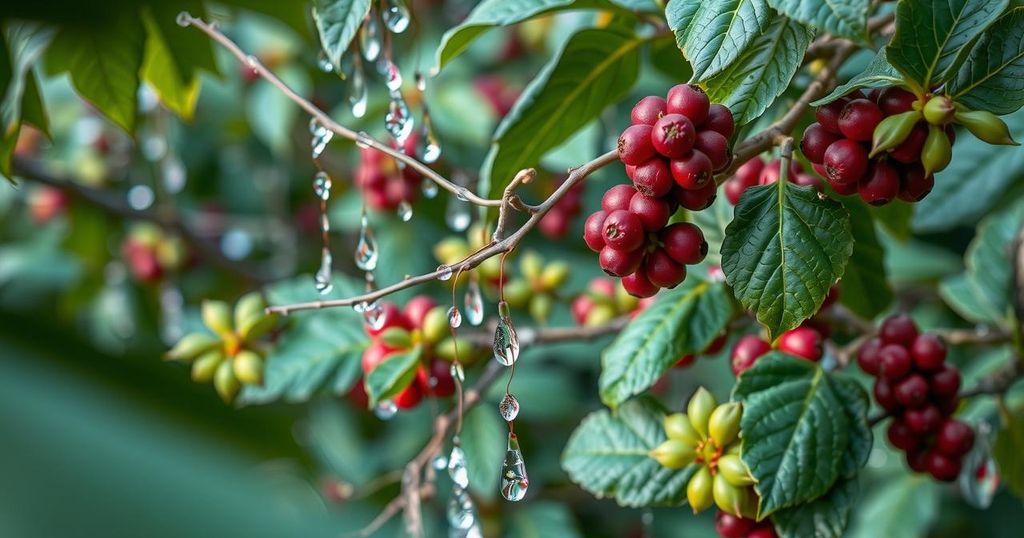Below-average rainfall in Brazil’s coffee-growing regions is raising concerns about future coffee yields and driving prices upward. This change in climate patterns may result in long-term implications for coffee supply and market pricing, necessitating close monitoring of the situation.
Recent climatic patterns in Brazil have raised concerns regarding the coffee sector, as below-average rainfall has been recorded in key coffee-growing regions. This decrease in precipitation has significant implications not only for the coffee yields but also for market prices, which have begun to rise due to anticipated reductions in coffee supply. Trade analysts suggest that sustained dry conditions could lead to longer-term price increases, as producers may struggle to meet the demand amid declining production levels.
Coffee is a staple commodity in the global market, heavily influenced by environmental factors. Brazil is one of the largest coffee producers worldwide, and its weather conditions directly affect coffee supply and pricing. When rainfall is insufficient, it hampers the growth and maturation of coffee plants, leading to lower harvest outputs. As a result, changes in Brazil’s rainfall patterns are closely monitored by investors and industry stakeholders, as they can indicate future market trends.
In conclusion, the below-average rainfall in Brazil stands as a significant factor affecting the country’s coffee production. As weather conditions threaten the supply, an uptick in coffee prices appears imminent. Traders and stakeholders should closely observe these developments, as they could shape the coffee market landscape in the coming months and years.
Original Source: www.barchart.com






